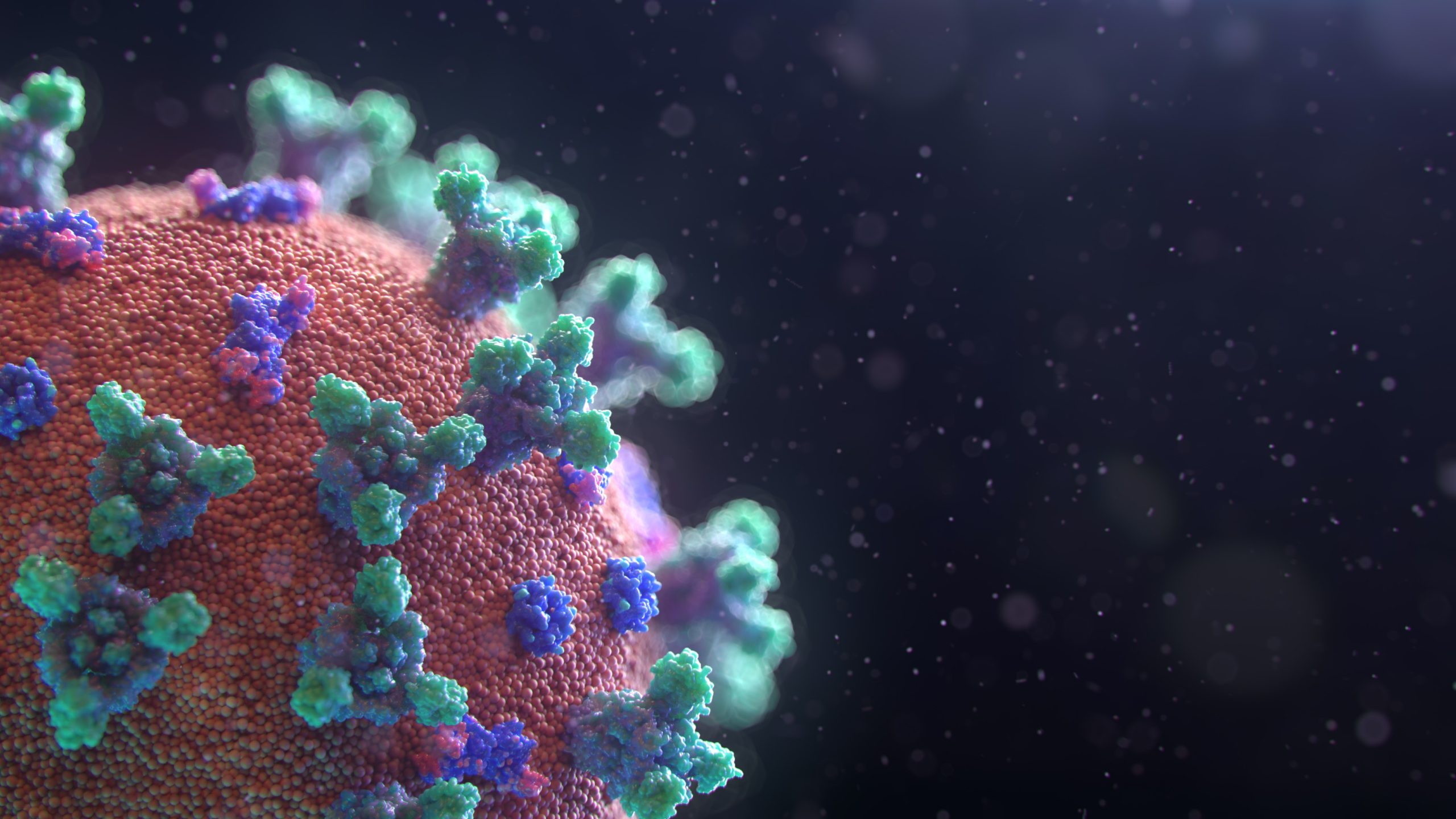
As you venture into the mysterious world of biology, one fascinating topic you’ll encounter is virology – the study of viruses. Viruses are tiny infectious agents that can only multiply inside living organisms, making them fascinating study subjects for scientists. This article will take you through the intriguing science behind viruses, exploring their unique structure, how they infect and multiply, and their role in evolution and biodiversity. You’ll also learn about viral infection prevention and treatment, exciting breakthroughs in virology research, and potential careers in this field. So, buckle up and get ready to dive into the captivating world of viruses!
If you struggle to grasp these complex processes, working with a biology tutor can provide a personalized learning experience to boost your understanding. By engaging a private teacher specializing in biology, you can delve deeper into the topic, asking questions and discussing the subject matter one-on-one.
What are Viruses? Understanding the Basics
Before we delve deeper into the science of viruses, it’s essential to understand the basics. What are viruses? At their core, viruses are infectious particles of genetic material (DNA or RNA) enclosed in a protein coat called a capsid. They are tiny, ranging from 20 to 300 nanometers in size. Due to their simplicity, viruses lack the necessary machinery to reproduce independently. Instead, they must invade a host cell and hijack its machinery to replicate.
Unlike bacteria and other microorganisms, viruses aren’t considered living organisms as they don’t possess all the characteristics of life. They cannot carry out metabolic processes, reproduce without a host, or respond to stimuli like living organisms. Hence, viruses occupy a unique position between living and non-living entities, sparking debates among scientists about their nature.
Also, dive into the intriguing world of microorganisms with our post on “Microbes’ Role in Maintaining Our Well-being”.
The Unique Structure of Viruses
Now that you understand viruses, let’s explore their unique structure. Viral particles, or virions, have two main components: the genetic material (DNA or RNA) and the protein coat (capsid). The capsid protects the genetic material and helps the virus attach to and enter host cells. Some viruses have an additional outer envelope of lipids derived from the host cell membrane.
The shape of the capsid varies among different viruses and can be helical, icosahedral, or more complex. Helical capsids are rod-like structures with genetic material coiled inside, while icosahedral capsids are spherical with 20 equilateral triangle-shaped faces. Complex capsids combine elements of both spiral and icosahedral structures or have additional features such as tails or spikes.
If you’re excited to delve deeper into the world of DNA, genes, and chromosomes, our blog post, “Understanding Genetics: A Comprehensive Guide for School Students Prepared by Tutors”, is a must-read.
Virology Glossary: Key Terms
- Host: The organism that a virus infects and uses to reproduce.
- Capsid: The protein coat that encloses the genetic material of a virus.
- Envelope: A lipid layer that surrounds some viruses, derived from the host cell’s membrane.
- Endocytosis: The process by which a cell engulfs a virus to bring it into the cell.
- Replication: The process by which a virus makes copies of itself within a host cell.
- Lysis: The process by which newly formed viruses break open, or lyse, the host cell, resulting in the release of the viral particles.
- Vaccine: A substance used to stimulate the production of antibodies and provide immunity against a virus, typically containing a form of the virus that is weakened or dead.
- Antiviral: A drug that inhibits the growth of viruses.
How Do Viruses Infect and Multiply?
Viruses are unique entities that cannot reproduce independently. They must invade a host cell to multiply, and this process involves several distinct and fascinating stages:
1. Attachment
The first step in the viral life cycle is attachment, also known as adsorption. In this phase, the virus recognizes and binds to specific receptor molecules on the surface of a host cell. This specificity is crucial as it determines the range of organisms, or host species, that a virus can infect. It’s like finding the correct key for a lock; the virus needs to find the proper receptor to initiate infection.
2. Entry
Once the virus has successfully attached to the host cell, it enters it. This can happen in two ways – either the virus fuses with the host cell membrane or the host cell engulfs the virus in a process known as endocytosis. This step is akin to a trojan horse entering a fortress, preparing to launch its attack.
3. Uncoating
After the virus enters the cell, it sheds its protective protein coat, a process known as uncoating. This releases the viral genetic material (either DNA or RNA) into the host cell’s cytoplasm, the cell’s internal environment. This step is comparable to unveiling a plan of attack.
4. Replication
The viral genetic material then takes over the host cell’s machinery to replicate itself. If the virus is a DNA virus, the host cell’s enzyme, DNA polymerase, synthesizes new copies of the viral DNA. If the virus is an RNA virus, it brings along or synthesizes a special enzyme called RNA-dependent RNA polymerase to replicate its RNA. This replication process is like a spy commandeering the enemy’s resources for its purposes.
5. Assembly
Once the viral components have been replicated, the next step is assembly. Newly synthesized viral genetic material and capsid (protein coat) proteins form new viral particles, like building new soldiers from available parts.
6. Release
The final stage of the viral life cycle is released. The newly formed viral particles exit the host cell by budding through the cell membrane (taking a piece of it as an envelope) or breaking the cell open in a lysis process. Once released, these new viral particles can infect other cells, perpetuating the cycle. This stage can be likened to the deployed soldiers leaving their base to conquer new territories.
Types of Viral Infections
Viral infections can be categorized based on various factors, such as the type of host, the affected body system, or the mode of transmission. Some common types of viral infections include:
- Respiratory infections: These infections affect the respiratory system and are transmitted through respiratory droplets or contaminated surfaces. Examples include the common cold, influenza, and COVID-19.
- Gastrointestinal infections: These infections target the digestive system and are often spread through contaminated food or water. Examples include norovirus and rotavirus.
- Bloodborne infections: These infections are transmitted through contact with infected blood or bodily fluids. Examples include hepatitis B and C and HIV.
- Sexually transmitted infections: These infections are spread through sexual contact. Examples include human papillomavirus (HPV) and herpes simplex virus (HSV).
Explore halogenides, sulfides, and hydroxides.
Viral Zoonoses – When Animals Infect Humans
Zoonoses are diseases that can be transmitted from animals to humans. Certain viruses are zoonotic, meaning they can jump from animal hosts to human beings, often with serious health implications. These viruses pose a significant public health risk and are the focus of extensive scientific research.
Understanding Zoonotic Viruses
Zoonotic viruses can originate from various animal hosts, including birds, rodents, bats, and insects. Some notable examples of zoonotic viruses include the Influenza A virus (bird flu), Rabies virus, Zika virus, and SARS-CoV-2, the virus responsible for the COVID-19 pandemic.
Transmission of Zoonotic Viruses
Zoonotic viruses can be transmitted to humans through direct contact with an infected animal, consuming contaminated food or water, inhaling virus particles in the air, or bites from infected insects or other vectors. The exact mode of transmission can vary depending on the specific virus.
Preventing Zoonotic Diseases
Preventing the spread of zoonotic viruses requires a combination of strategies, including proper hygiene practices, responsible animal handling, use of personal protective equipment, and public health initiatives such as vaccination programs and disease surveillance.
The Role of Research in Combating Zoonotic Diseases
Scientific research is critical in understanding zoonotic viruses and developing effective strategies to prevent and treat zoonotic diseases. This includes studying the viruses themselves, their animal hosts, the mechanisms of transmission, and the interactions between humans and animals that can lead to disease outbreaks.
Learning about viral zoonoses and the mechanisms of viral infections and replication can be challenging, but with the right tutoring support, these complex topics can become much more accessible.
Are you seeking an engaging biology tutor? Look no further! Just drop by at meet’n’learn and find your perfect match.
The Role of Viruses in Evolution and Biodiversity
While viruses are often associated with disease, they also play a crucial role in evolution and biodiversity. Viruses can transfer genetic material between different organisms through horizontal gene transfer. This transfer of genes can introduce new traits to a species, allowing them to adapt to changing environments and ultimately driving evolution.
Viruses contribute to biodiversity by regulating population sizes and maintaining ecosystem balance. For instance, bacteriophages, viruses that infect bacteria, help control bacterial populations and prevent the overgrowth of harmful bacteria.
Exciting Breakthroughs in Virology Research
Virology research has led to numerous groundbreaking discoveries, such as the development vaccines and antiviral medications. Recent breakthroughs include:
- CRISPR gene editing: Scientists are exploring the potential of CRISPR technology to target and eliminate specific viruses by editing their genetic material.
- Nanotechnology: Researchers are developing nanoparticles that can mimic host cells, attracting viruses and neutralizing them before they can infect real cells.
- Next-generation vaccines: Novel vaccine platforms, such as mRNA vaccines, have shown promise in rapidly developing effective vaccines against emerging viral threats, as seen with the COVID-19 pandemic.
Ready to unravel other major discoveries in Biology? Our blog post, “Embark on a Journey Through Life by Exploring the Greatest Discoveries in Biology”, is just for you!
Careers in Virology and Related Fields
If you find the world of viruses fascinating, consider pursuing a career in virology or related fields. Some potential career options include:
- Virologist: Virologists study viruses and their interactions with host organisms, working in academia, pharmaceutical companies, or government agencies.
- Epidemiologist: Epidemiologists investigate the patterns and causes of diseases, including viral infections, to inform public health policies and interventions.
- Vaccine researcher: Vaccine researchers develop and test new vaccines to protect against viral infections.
- Clinical laboratory scientist: Clinical laboratory scientists analyze samples from patients to diagnose and monitor viral infections.
To pursue a career in virology or related fields, you’ll typically need a bachelor’s degree in biology or a related field, followed by a master’s or doctoral degree specializing in virology or a related discipline. If you’re preparing for a biology exam or a career in life sciences, tutoring sessions focused on virology can significantly improve your knowledge and confidence.
Want to discover how fun and fascinating biology can be? Check out our blog post, “Unlocking the Wonders of Biology: How a Tutor Can Help Make Science Fun”.
If you’re all about personalized learning experiences, use search phrases like “biology tutor Glasgow” or “biology teacher Sheffield” on any reputable tutoring platforms.
Love social learning? Think about joining a biology class! It’s a brilliant way to learn and network at the same time. Kickstart your search with terms like “biology classes London” or “biology lessons Manchester” to find classes near you.
Conclusion: The Fascinating World of Viruses and Their Impact on Life
Studying viruses offers a captivating glimpse into the complex interplay between infectious agents, host organisms, and the environment. Understanding the science behind viruses helps us combat viral infections and sheds light on the broader principles of life, evolution, and biodiversity. By delving into virology, you can satisfy your curiosity and embark on a rewarding career in this fascinating field.
FAQs about Virology and Viruses
1. What is a virus?
A virus is an infectious particle of genetic material (DNA or RNA) enclosed in a protein coat called a capsid. They are tiny, ranging from 20 to 300 nanometers in size, and require a host cell to reproduce.
2. How do viruses reproduce?
Viruses reproduce by infecting a host cell and using the host’s cellular machinery to replicate their genetic material. Once new virus particles are assembled, they exit the host cell, often destroying it in the process.
3. What’s the difference between a virus and a bacterium?
Viruses and bacteria are both microorganisms, but they differ significantly. Bacteria are living organisms that can reproduce independently and have a cellular structure. Viruses, on the other hand, are not considered living because they require a host cell to reproduce and do not carry out metabolic processes.
4. What is a vaccine?
A vaccine is a substance used to stimulate the immune system to produce a response, including the production of antibodies, to provide immunity against a specific virus. Vaccines often contain a weakened or dead form or parts of the virus.
5. What is the role of viruses in biodiversity?
Viruses play a crucial role in biodiversity by transferring genes between different organisms, allowing them to adapt to changing environments and driving evolution. They also help regulate population sizes and maintain balance within ecosystems.


